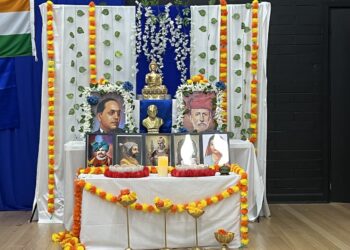The United States is set to launch a pilot program aimed at domestically renewing specific categories of H-1B visas in December, a move anticipated to greatly benefit numerous Indian technology professionals, as per information provided by US officials.
This decision follows the announcement of the plan by the White House during the state visit of Prime Minister Narendra Modi in June.
Julie Stufft, Deputy Assistant Secretary of State for Visa Services, highlighted in an interview with news agency PTI that there is still considerable demand for US visas in India, expressing concern about extended wait times of six, eight, and 12 months, which is not aligned with their perspective on India.
Julie Stufft, Deputy Assistant Secretary of State for Visa Services, explained, “We want to make sure that Indian travellers can get appointments as quickly as possible. One way we are doing that is through the domestic visa renewal program, which is focused very much on India. We are piloting that.”
Starting in December, the State Department plans to issue 20,000 visas over a three-month period, primarily to Indian nationals already residing in the US. The initiative aims to benefit India significantly, given the country’s status as the largest skilled group of workers in the United States.
The program is expected to alleviate the need for individuals to travel back to India or elsewhere for visa renewal appointments, allowing US missions in India to prioritise new applicants.
While the State Department has been actively working on the pilot program for some time, its formal announcement occurred during Prime Minister Narendra Modi’s visit. The plan, initially mentioned in the joint statement and subsequently disclosed by PM Modi during his address to the Indian diaspora at the Ronald Reagan Centre, has garnered positive reception from the Indian community in the US.
Julie Stufft explained that a federal register notice, the first official notice of the program, will be released soon. This notice will outline the necessary steps, eligibility criteria for the first tranche of applications, and provide detailed instructions.
She emphasised, “But I can say that we are doing these visas here in the United States. So, the idea is for a visa to be mailed from the United States to us in Washington. We print the visa and process the visa, put it in the passport and send it back to someone in the United States.”
Highlighting the convenience of the program, Stufft stated, “So (that) the people don’t have to go to either Mexico or Canada or back to India or anywhere (else) to get that visa renewed. That is something that will be laid out very clearly in this federal register notice that comes out in a few weeks.” She clarified that the domestic visa renewal program specifically applies to work visas.
“This is an existing regulation that was allowed that we just have not used in about 20 years. These are work visas. It is intended for people who are living long-term in the US but want to renew their visa without going back overseas,” stated Julie Stufft.
Describing it as a “huge undertaking”, she expressed excitement about the pilot program, commencing with 20,000 cases in December, January, and February. The State Department looks forward to expanding the program to include more categories of workers residing in the United States throughout 2024.
Indian-American community leader Ajay Jain Bhutoria hailed the State Department’s move as “significant”. As the commissioner to the President’s Advisory Commission on Asian Americans, Native Hawaiians, and Pacific Islanders, Bhutoria presented a proposal, accepted and recommended by US President Joe Biden.
“I am happy to see the recommendation I presented on behalf of immigration subcommittees on the Commission for H-1B visa stamping in the USA finally being implemented,” Bhutoria remarked. He highlighted that this relief will ultimately benefit over one million H-1B holders, with a substantial number being Indians.











